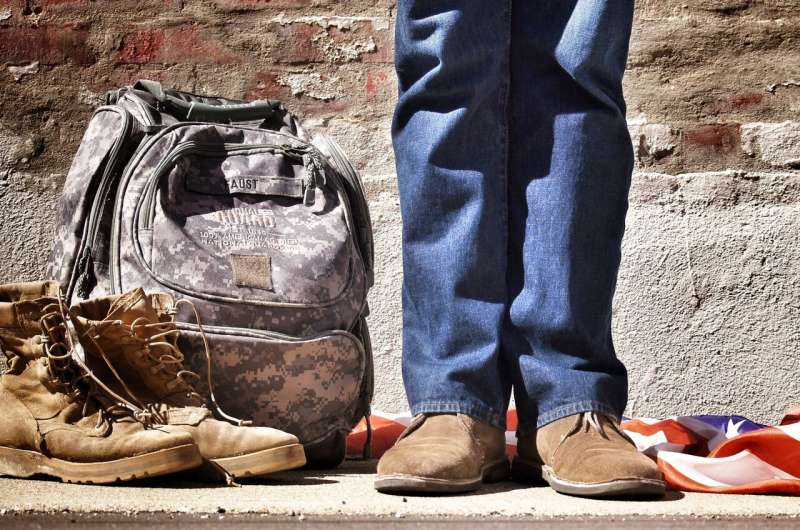This article has been reviewed according to Science X's editorial process and policies. Editors have highlighted the following attributes while ensuring the content's credibility:
fact-checked
proofread
Study explores perceptions of US Veterans Treatment Courts

A new study by researchers at the University of Massachusetts (UMass) Lowell, San Diego State University, and Penn State Harrisburg has examined perceptions of team members who work with a U.S. program called Veterans Treatment Courts (VTCs) regarding the viability and longevity of the program. The study identified team members' expectations and hopes for the future, including the importance of expansion of and continued funding for a program that considers the unique and ongoing needs of U.S. veterans.
The work is published in the journal Victims & Offenders.
"Despite VTCs' rapid spread over the last 15 years, little research has explored the perceptions of the people who work with these programs regarding the viability and longevity of the program," says Kelly M. Socia, professor of criminology and justice studies at UMass Lowell and lead author of the study. Socia is an expert whose work is promoted by the NCJA Crime and Justice Research Alliance. "Understanding team members' perspectives on what the future may hold is crucial to fully understanding the VTC model, as well as potential future opportunities and challenges."
This multi-site research project—Community Participatory Research on Veterans in Specialized Programming (Dr. James M. Byrne, Project Director)—is one of several research projects being conducted through the Justice Community Opioid Innovation Network Coordination and Translation Center. Other studies from this same project were published in a special issue of Victims and Offenders.
VTCs, first established in 2008 in Buffalo, New York, are a policy response to concern that veterans in the United States have unique needs that are not met adequately by the criminal justice system. Since then, VTCs have spread rapidly; currently, 600 operate in the United States, providing services in a therapeutic court setting to individuals who are current or former members of the U.S. military who have been charged with eligible offenses. Not all VTCs operate in the same way; programs differ from jurisdiction to jurisdiction, including in eligibility criteria, sobriety requirements, treatment services, and sources of funding.
In this study, researchers explored the perceptions of 145 VTC team members from 20 programs around the United States, including attorneys, judges, probation officers, and clinical personnel. Overall, interviewees said they believed that VTCs were likely to be around for a long time. They also said they believed the program was valuable to both veterans and society overall, and that this importance should be clear to politicians and the public.
The study also identified four overarching themes about team members' expectations and hopes for VTCs: 1) the need for continued funding and increased resources, 2) desires to expand participation in VTCs, 3) hope and uncertainty about the future of VTCs, and 4) issues involved with depending on specific people to ensure the future of VTCs.
While interviewees generally felt quite hopeful and optimistic that VTCs would continue to exist and may even expand, they also expressed unease about exactly how this would occur, commenting on the challenges of securing stable funding sources, maintaining buy-in from key individuals, and identifying resource needs for expanding the participation and eligibility criteria of VTCs.
"Because VTCs can play important role in supporting justice-involved veterans and offering more benefits than traditional justice-system responses, it is vital to ensure that VTCs continue operating," adds Socia.
The study's authors caution that their data are based on only 20 VTCs, so their findings do not generalize to the hundreds of VTCs in the United States.
More information: Kelly M. Socia et al, "God, I Hope It Doesn't Fade Out": Team Member Perspectives on the Future of Veterans Treatment Courts, Victims & Offenders (2023). DOI: 10.1080/15564886.2023.2276321
Provided by Crime and Justice Research Alliance





















